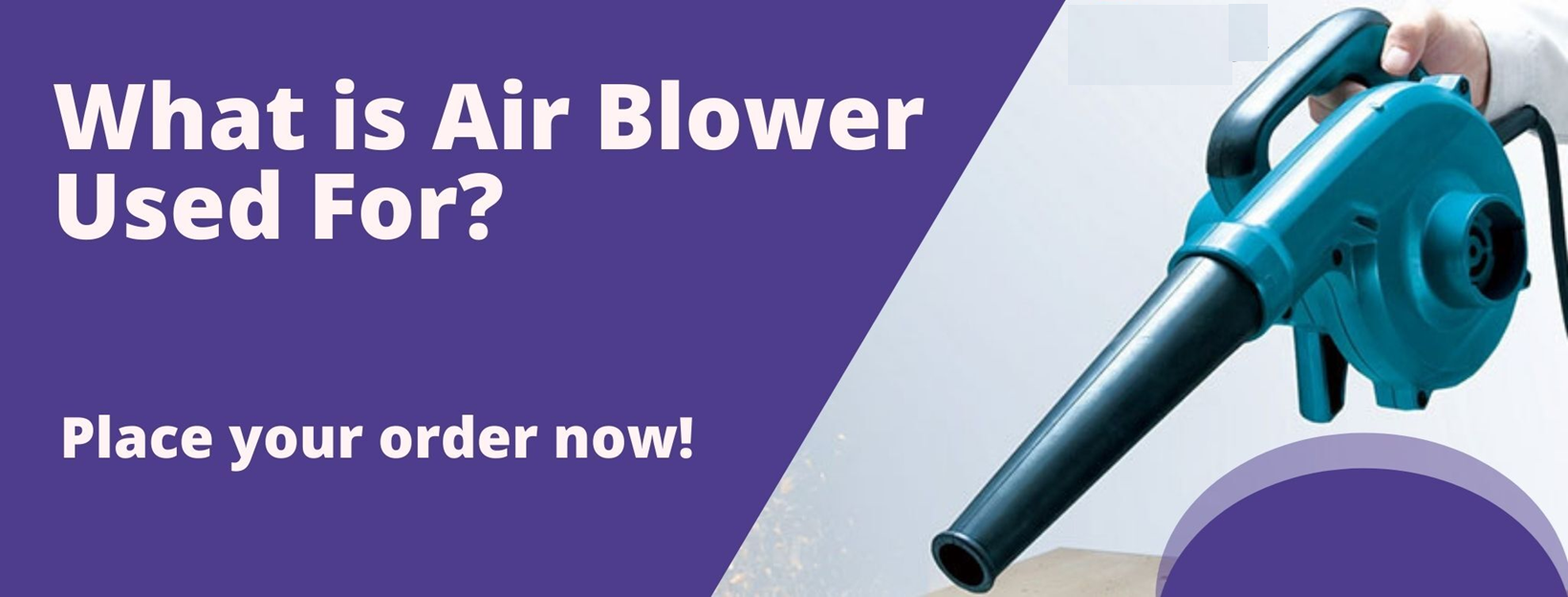
Below is an article on air blowers that offers a comprehensive overview—from the operating principles to installation, commissioning, maintenance, and troubleshooting. This article is intended to support engineers and industrial professionals by providing a holistic perspective for selecting, assembling, and operating air blowers in an effective, safe, and durable manner.
1. Introduction
The air blower is a key piece of equipment in numerous industrial applications, ranging from cooling, ventilation, and dust removal to drying processes and air transportation. With its ability to generate high airflow with stable pressure, the air blower not only enhances production efficiency but also helps maintain a safe working environment. Selecting the proper type of air blower and adhering to regular maintenance routines are critical factors to ensure the long-term operational efficiency of the entire system.
2. Operating Principle
Air blowers convert the mechanical energy supplied by a motor into the kinetic energy of air. There are two basic operating principles that depend on the type of air blower:
-
Axial Type: This type uses a propeller that rotates along its axis to generate a straight and forceful air stream. The design typically delivers high airflow at relatively low pressures, making it ideal for ventilation and cooling applications.
-
Centrifugal Type: In this configuration, as the motor rotates, air is drawn into the center of the machine and expelled perpendicularly to the axis by centrifugal force. Such blowers usually produce higher pressure and are well-suited for applications that require compressed air or the transportation of air through complex ducting systems.
Modern air blower designs integrate efficient drive mechanisms with advanced improvements in fan blade geometry and separation casings to reduce energy losses and ensure optimal performance.
3. Classification of Air Blowers
Air blowers are categorized based on several key criteria:
-
By Movement Type: • Axial Blowers: Produce a straight airflow, delivering large volumes but with low pressure. • Centrifugal Blowers: Generate a swirling airflow that creates higher pressure and are often equipped with amplifiers for airflow distribution and directional control.
-
By Power Source: • Electric-Powered Blowers: Widely used in industrial settings for their high stability and ease of control. • Fuel-Powered Blowers (Gasoline, Diesel): Employed in mobile applications or where the electrical supply is unreliable. • Pneumatic Blowers: Selected when flexibility and mobility are required or in environments with stringent explosion-proof safety requirements.
-
By Application: • Ventilation and Cooling: Utilized for air treatment in buildings and factories. • Air Transportation: Used in production lines, waste treatment, drying processes, or for cleaning manufacturing areas.
Each type of blower comes with its own advantages and drawbacks; thus, selection must be based on the specific technical requirements of the application.
4. Structure and Main Components
A typical air blower consists of the following components:
-
Motor: Provides the rotational force for the fan. Depending on the required power, the motor may be an alternating current (AC) or direct current (DC) type and is usually equipped with a speed controller to regulate airflow.
-
Fan/blade: The geometric design of the fan blades directly affects both performance and the direction of airflow. Materials are typically chosen for their load-bearing capacity (such as robust metal) or high-strength plastics to ensure durability while minimizing friction.
-
Casing/Scroll: For centrifugal blowers, the casing helps guide and augment the pressure before the air is discharged.
-
Air Intake and Exhaust System: This system includes the inlet ducts, outlet ducts, and directional control elements to regulate both the flow rate and the pressure of the discharged air.
-
Ancillary Components: These may include sensors, control valves, a central control unit, and various safety systems—such as over-pressure relief valves, overload protection, and electrical interlocks.
Continuous improvements in each component are aimed at optimizing performance and reducing energy consumption, which remains a primary objective for manufacturers.
5. Assembly and Installation Process
Installing an air blower requires strict adherence to technical protocols to ensure both safety and efficient operation:
-
Preparing the Installation Foundation and Area:
-
Space Check: Ensure that the installation area is spacious, well-ventilated, and free of any obstacles that could impede air flow.
-
Surface Preparation: The floor should be flat and stable to minimize vibrations during operation.
-
-
Inspection and Verification of Components:
-
Cross-check the parts list against the manufacturer’s instructions.
-
Examine the condition of the motor, fan, and all mechanical joints.
-
-
Assembly of Main Components:
-
Install the motor into the base frame according to the specified schematic.
-
Attach the fan, ensuring it is balanced, and tighten all fasteners securely to prevent imbalance during operation.
-
If applicable (for centrifugal blowers), install the air casing and ensure that the intake and exhaust ducts are connected correctly as per technical guidelines.
-
-
Connecting the Control and Safety Systems:
-
Wire the system according to the circuit diagram, verifying that all electrical connections meet safety standards.
-
Install sensors, control valves, and other protective devices, then perform initial calibration.
-
-
System-Wide Testing:
-
Mechanical Check: Confirm that all rotating parts operate smoothly without excessive vibration or noise.
-
Electrical Check: Ensure that the power supply is stable and that all control systems are correctly activated.
-
Following the prescribed installation sequence helps guarantee that the air blower will function optimally from the very first use.
6. Operation and Adjustment
Once installed, the operational process for the air blower must be carried out with care:
-
Starting the Machine:
-
Verify that the electrical system has been thoroughly checked and is stable before start-up.
-
Ensure that all sensors and safety devices are active to guarantee safe operation.
-
-
Adjusting Speed and Airflow:
-
Use a speed controller (such as PWM or a variable frequency drive) to regulate the motor’s speed, thereby controlling airflow and discharge pressure.
-
Monitor and record performance parameters such as RPM, air pressure, and temperature.
-
-
Monitoring Operation:
-
Continuously observe the operational data via a display panel or an integrated SCADA system.
-
Detect early signs of anomalies—such as increased temperature, pronounced vibration, or excessive noise—and take corrective measures promptly.
-
7. Regular Maintenance and Upkeep
To ensure stable and durable operation, regular maintenance of the air blower is essential:
-
Cleaning:
-
Regularly clean the surfaces of the fan blades and the casing to remove dust buildup that may obstruct airflow.
-
Carefully inspect the sensor systems and electronic components to ensure that no debris interferes with their function.
-
-
Inspection and Lubrication:
-
Frequently check the shaft, bearings, and mechanical joints.
-
Apply oil or specialized grease as recommended by the manufacturer to reduce friction and prevent wear.
-
-
Checking Electrical Connections and Controls:
-
Regularly inspect all electrical connections to ensure that cables are intact and securely fastened.
-
Recalibrate operational parameters after a period of use to ensure they continue to meet the original specifications.
-
-
Planning for Replacement of Wear Parts:
-
Monitor the lifespan of key components such as the fan blades, motor, and sensors to schedule timely replacements and avoid system downtime.
-
8. Troubleshooting
Common issues encountered with air blowers include:
-
Unusual Noise and Vibration:
-
Causes: Unbalanced fan blades, loose joints, or damaged shafts.
-
Solution: Reassess and adjust the positioning of the fan, securely tighten all joints, and ensure proper lubrication of the shaft.
-
-
Reduced Air Pressure or Flow:
-
Causes: Dust accumulation within the casing or corrosion of internal components.
-
Solution: Clean the internal parts, inspect the outlet duct and connecting pipes, and replace any worn components.
-
-
Intermittent Operation at Start-Up:
-
Causes: An unstable power supply or faults in the control circuitry.
-
Solution: Verify that the power supply meets the motor’s voltage requirements and, if necessary, perform a reset of the control system.
-
-
Elevated Motor Temperature:
-
Causes: Insufficient lubrication, a malfunctioning cooling fan, or excessive dust accumulation.
-
Solution: Check the cooling system, ensure that the motor is properly lubricated, and clean the area around the motor thoroughly.
-
Prompt corrective measures will help minimize downtime and protect the equipment from further damage.
9. Applications and Safety Standards
Applications: Air blowers are widely used in industries such as food processing, textiles, automotive manufacturing, waste management, and production drying processes. In addition to ventilation, they play a crucial role in cooling equipment and maintaining an optimal work environment.
Safety Standards:
-
Always follow the manufacturer’s installation and operating instructions.
-
Ensure that the blower is installed in a well-ventilated area equipped with impact protection and proper insulation.
-
Install safety devices such as relief valves, temperature sensors, and emergency alarm systems to prevent accidents.
-
Train staff in the proper use, maintenance, and troubleshooting procedures for the air blower.
10. Conclusion
Selecting and operating an air blower requires a deep understanding of its operating principles, design, and technical specifications. From proper installation and operational adjustments to regular maintenance routines, every step is crucial for ensuring optimal performance, longevity, and safety in an industrial setting. This article has compiled all the technical aspects to offer detailed guidance for engineers and operations managers, enabling them to develop optimal and effective solutions tailored to specific applications.
QTE Technologies is your exclusive destination for all reputable air blowers. We are an international MRO (Maintenance, Repair, and Operations) supplier and offer a complete catalogue of over one million products to customers in more than 180 countries. With our 24×7 live chat support, you can reach us at any time via phone, WhatsApp, or email. Discover what our valued customers have to say about our service on our dedicated review page.
Post Author By QTE Technologies Editorial Staff (with a solid background in both technical and creative writing - accumulated 15+ years of experience).




